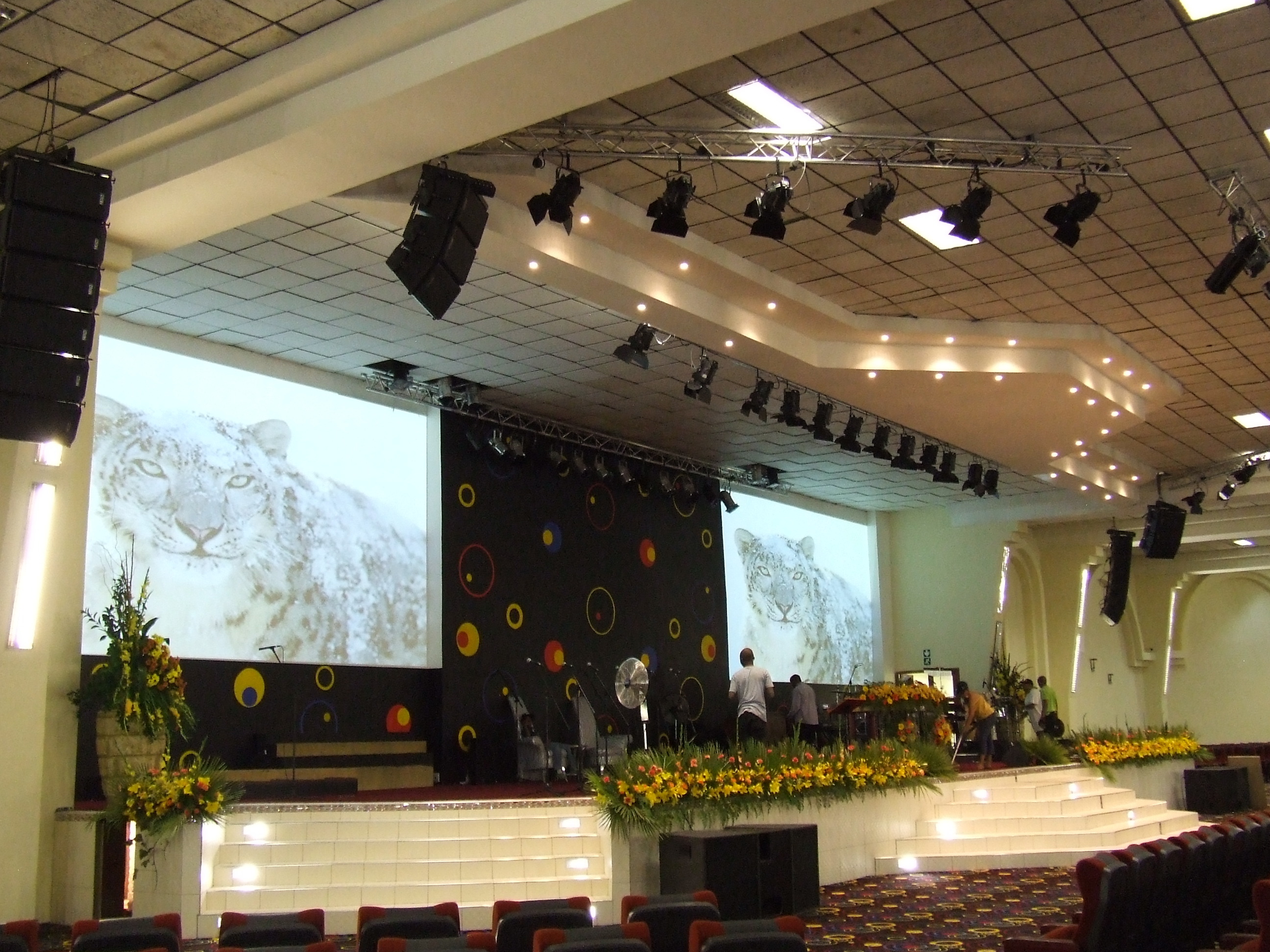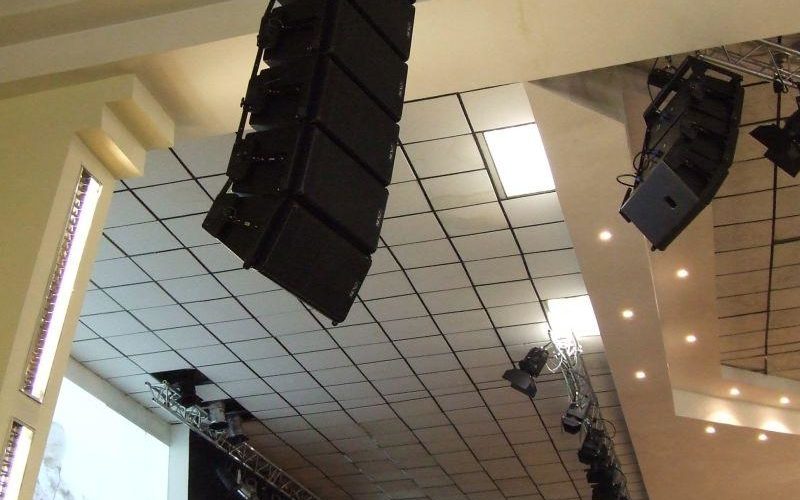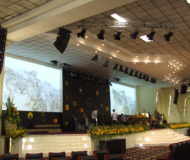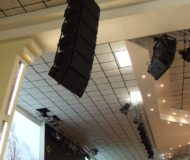The loudspeaker system selected for the sanctuary is a NEXO GEO S1210 line array. Nexo has a fantastic reputation world-wide for delivering rock solid performance, reliability and utmost audio quality. Their Alpha systems are legendary and many live music venues would not have fared the same without them. Quite simply put, they are warm, inviting speakers that are comfortable to listen to in almost any application.
For the main FOH system, four arrays were flown to achieve maximum coverage. Each side featured two arrays; an outer with six S1210s and an inner with three S1210s. The purpose of this configuration was to supply centrefill from the two inner arrays on a Centre bus and a Left and Right bus for the outer arrays, giving absolute control of array levels. For the outer arrays, the 120 degree non-coupling waveguide configuration was selected in order to cover properly what is an extremely wide sanctuary, measuring in at around 70 meters. However, the width of the room was not the only obstacle.
“It was quite challenging installing this line array because the room is not perfectly symmetrical” says Perry Ellis from Tadco. “It looks symmetrical but it’s not. The software measurements just gave us a guideline but you need to practice some common sense. Nothing beats your ears.”
For low-end reinforcement, four Nexo Alpha S2 subwoofers were employed; two of each stacked per side. Granted, these are now older-model subwoofers in the Nexo line but there is no doubting the quality and low frequency extension of these dual-18” enclosures. After all, with a peak SPL of 140dB and a frequency response of 32 – 64Hz, they are a pretty good match for the S1210s which extend from 19kHz down to 53Hz. In any case, the S2s are only a temporary measure until phase two of the installation, set to go ahead later in 2013, where four brand new Nexo RS15 subwoofers will replace them. The RS15s extend from 200Hz – 35Hz in omni or 150Hz – 35Hz in directional mode, thus giving a wider range of crossover options, and have a peak SPL of around 139dB which is quite similar in performance to the S2s.
Powering the main system are 2x Nexo NXAMP 4×4 DSP-loaded amplifiers, which are among some of the most powerful the industry has to offer. In a nutshell, these amplifiers can drive a maximum 8000W per side in a stereo setup (16000W total) all the way down to 2 Ohms, and incorporate two dual-core 24-bit fix point DSP chips with 56-bit accumulators for system processing. There are a variety of configurations that can be selected because these are essentially four in, four out amplifiers but in the case of the Perfecting Church, one NXAMP was selected to drive the S2 subs and another to drive the main arrays in LCR configuration.
Walkaround
After the spec of the system had been revealed to me, I was played a selection of modern gospel music at a level that was typical of a service. Immediately I was met with the warm, inviting sound that Nexo has become known for. The low end extension of the system really presented itself strongly, but not in an obtrusive way but rather, it was full and commanding with the impression that it could pound the chest if need be. The midrange was smooth, too, and there were very little spectral artefacts that caused my ears to prick. This mated very nicely with the top end, which was crisp and shiny and seemed to “glow” from the four arrays.
Gathering my initial impressions, I set out to listen to the coverage consistency of the system. I made my rounds, listening for dropouts, phase seems and spectral issues. Indeed, the low end coverage of the system was very consistent and I could feel the bass nicely from end to end of the sanctuary. The spectral consistency was also very good but I did notice a slight increase in volume when I arrived at around 60 degrees off-axis due to the larger arrays being orientated there, but this is expected if you’re sitting directly in front of them. Travelling to the outer extremes to around 120 degrees off axis, the volume dropped off again but I expected as much because these seats are pretty far behind the front of the stage at that point. These are the challenges a very wide room presents. Otherwise, I found that the system was set up as well as one could ask for in a room such as this, and Tadco, Perry and his team had clearly done a fantastic job in rigging and configuring the system.
(thanks to Greg Bester for letting us use extracts from his article for Pro Systems magazine.)


















































